In the evening, the city unfolds in its typical rhythm: cafés and bars bustle with life while children play in the fountains. The On the Shield [a Ukrainian army unit handling the return of fallen soldiers’ bodies from the frontline to their families – ed.] vehicle zips by, trailed by a flashy Mustang revving as if for the last time. A drunken punk stumbles out of a bar. Suddenly, the air raid siren blares, an explosion reverberates, and a flurry of ambulances and fire trucks descend upon the scene, with news of a strike in the city centre lighting up the chat threads. Meanwhile, nearby, mothers amble serenely with their children, military personnel move briskly through their duties, and a young couple strolls hand in hand. On the roof of the Menorah business complex, a live orchestra performs while a procession of Hare Krishnas passes by singing. In the square by the school, a local community has set up an installation reflecting the experiences of displaced people, accompanied by music from the children of internally displaced persons. As night falls, the distant clamour of air defence systems melds with the murmur of criminal disputes…
Each day unfolds with a familiar cadence: only the dates of missile strikes and anniversaries shift. The cemetery, adorned with blue and yellow flags, steadily grows. Occasionally, people return from abroad, drawn back to their homes, while new names emerge to honour military units, fallen friends, and national heroes. Dnipro evokes both love and loathing, much like the sign of Aries: perpetually fiery, ever-moving, and a force of unity. With it, one feels an unshakeable security—it remains steadfast and loyal to its own.
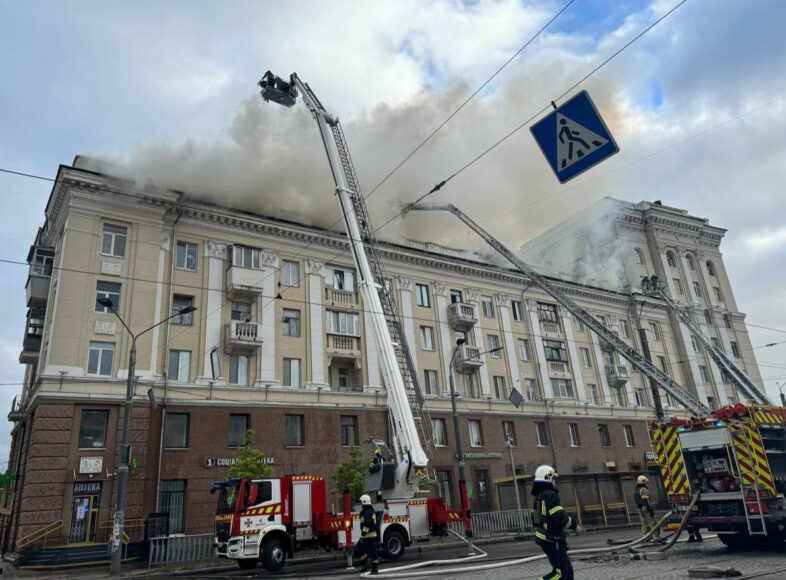
Photo: Serhiy Lysak, Dnipro Regional Administration | Telegram
Recently, the nation watched with interest as some public figures attempted to stoke controversy over language under the banner “Dnipro killed Farion” [Iryna Farion, a controversial former MP who was shot dead outside her home in Lviv in July – ed.]. Yet, for those connected to the Revolution of Dignity and the first wave of volunteers and activists from 2014, the contribution of Dnipro—Russian-speaking and otherwise—in resisting the occupying forces in Donbas is clear. Here, battalions like Dnipro-1, Donbas, and Right Sector (now Ukrainian Volunteer Corps and Ukrainian Volunteer Army) were formed alongside numerous renowned military units and brigades of the Ukrainian Armed Forces, without which Eastern Ukraine would not have held its ground until 24 February 2022.
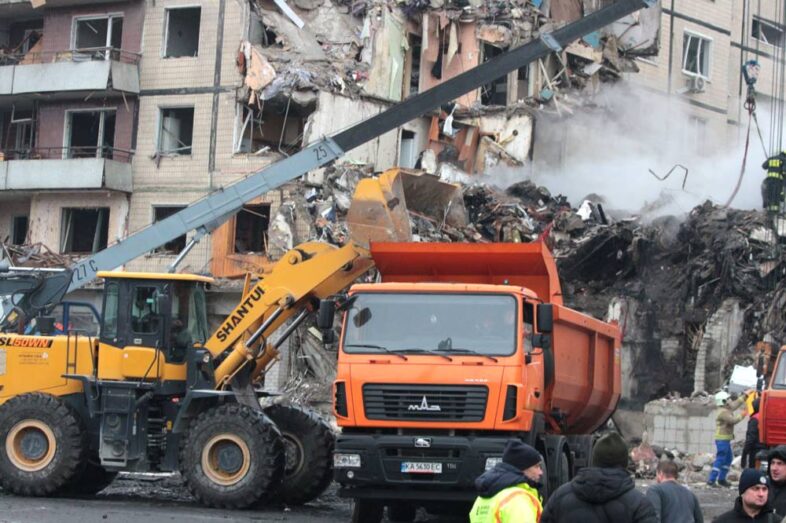
Photo: Dnipro Regional Administration | Telegram
A few years back, Iryna Tsybukh, a producer and paramedic with the Hospitallers Unit, who was tragically killed by Russia, launched the project “My Pereishly” (“We Switched the Language”). This initiative highlighted the mass transition of Dnipro’s residents to their native language—a transformation broadcast across Ukraine. Before 2014, Ukrainian speakers in Dnipro were largely relegated to niche stores and nationalist marches. Yet, we have evolved, embracing our flag and fortifying our national identity.
Borys Filatov, the mayor of Dnipro, reflects: “The narrative of Dnipro as a remarkable city—one that ten years ago halted what Russians called the ‘Russian Spring’ and emerged as the epicentre of the volunteer and activist movement—is a story often recounted. Throughout this time, Dnipro’s perspective has remained unchanged. The city has always been and continues to be, mentally distinct from Russia.
In this sprawling war, Dnipro serves as the country’s principal medical, humanitarian, military, and logistical nexus. We have accommodated what is likely the largest influx of displaced individuals in Ukraine—approximately 200,000. The city’s hospitals are the busiest, handling the highest number of casualties, and we boast a centre for evidence-based rehabilitation. Given our strategic position, all routes to the front inevitably pass through Dnipro. The war’s impact is acutely felt here, yet life persists with unwavering resilience.”
The relentless barrage of missile strikes, the ceaseless wail of sirens, and the pervasive tension do little to uplift spirits. Adapting to war is an impossibility; survival demands acceptance of its harsh realities and vigilant care for one’s well-being, including mental health. Those who remain in the city persist in their work and tax contributions, ensuring that Dnipro can continue to support the Defence Forces. Everyone does what they can—volunteering, donating, and aiding those in need. No one imagined enduring life amidst war, but in Dnipro, there is a shared understanding: resilience and resistance are the only paths forward.
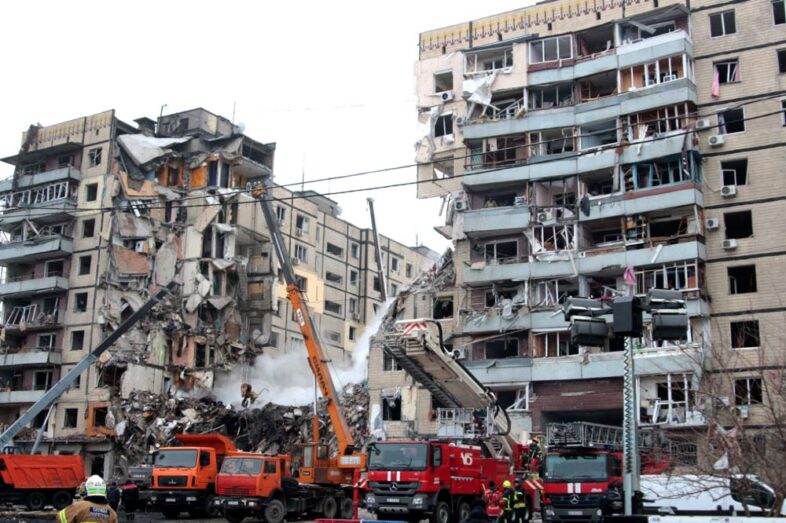
Photo: Dnipro Regional Administration | Telegram
For the vigilant defenders of Ukraine, February 24th was an anticipated escalation from Russia, known for its brutality. The festive lights and celebratory spectacles of Christmas in the large cities, with their glitz and glamour, overshadowed the imminent threat of a large-scale invasion despite dire warnings from national and international media. Dnipro, too, had momentarily forgotten the gravity of the situation, recalling a time when a thousand people donated blood at Mechnikov Hospital for the first casualties. Nevertheless, the city’s volunteer networks, which had been waning since 2019 and occasionally evolving into new political or civic initiatives, sensed a change. By early February, wounded veterans who had dispersed across Ukraine since 2016-2017 were already preparing their documents and equipment.
As the first explosions echoed, ordinary city dwellers abandoned their morning lattes and fled abroad in droves. Meanwhile, the remarkable citizens of Dnipro, who had been channelling aid to Donbas since 2014 while occasionally leading their usual lives, tightened their belts and set up new headquarters that resembled vast corporate operations. Alongside these efforts are the independent yet highly effective volunteers, whose tireless work has been indispensable in navigating the labyrinth of bureaucracy to ensure the military receives the necessary supplies.
Anastasia Tepliakova, a philologist, lecturer, research associate at the Literary Prydniprovia Museum, and founder of the Slovo Na Stini (“Word on the Wall”) project—which promotes Ukrainian writers through public art—along with her role as co-founder of the Dobri Liudy. Volonterska Chota NGO (“Good People. Volunteer Platoon”), reflects:
“In 2022, as people assembled ‘smoothie’ [Molotov cocktails – ed.] components under Russian missile fire, it was a surreal moment of collective joy. It seemed that everyone was contributing in their own way. I recall driving around the city, uncertain of my destinations or companions, but always transporting vital supplies for the front.”
“Today, it’s hard to say that people’s views on the war and the enemy have shifted much. Enthusiasm has waned, and the prevailing atmosphere of relaxation hardly fosters a sense of unity. But despite it all, people still take action. My neighbours, seeing the constant ‘rotation of packages’ at my place, jumped in to help. From 2022 to 2024, we’ve sent 26 vehicles to the front lines and repaired at least as many. The number of drones we’ve sent is too vast to count. In just the past three months, we’ve shipped over 200 first aid kits and around 500 Ukrainian books to libraries in recently liberated areas. At night, I pore over information on chemical weapons because, yes, the Russians are using them. I want my people to stay safe and unharmed.”
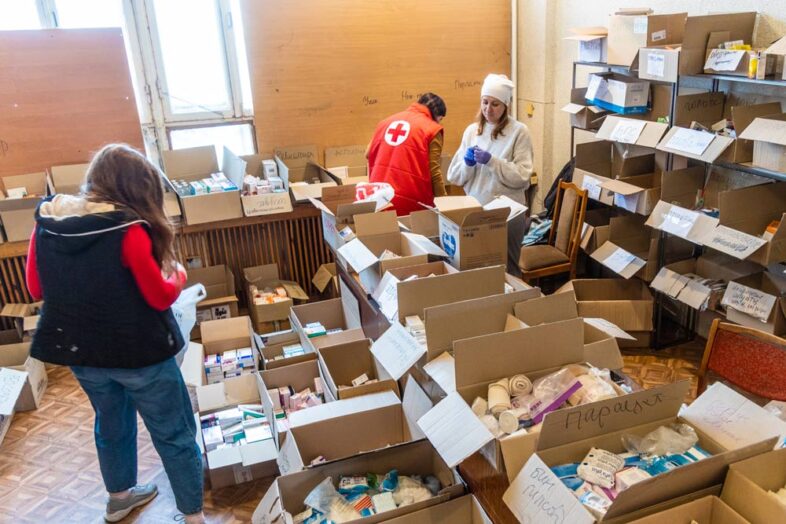
“We even rescued two Labradors and a cat. But I’m no frontline warrior—I still don’t know how to drive, though I do have three folding carts for delivering supplies.”
“On February 24, the missile park in Dnipro became an instant magnet for international media. Cameras captured scenes of people in wheelchairs, grandmothers, and children assembling Molotov cocktails. The dusty high-rise of ‘DniproCivilProject’ was swiftly converted into a Coordination Headquarters bustling with 1,000 volunteers. Soldiers streamed in for body armor, helmets, and first aid kits; displaced people showed up for food and essentials; and ordinary citizens arrived with bread, groceries, and sometimes even old cars to donate for the front.”
The House of Arts, the Trade Union Building, theatres, train stations, schools, kindergartens, and churches all operated with a singular purpose. Among the most notable efforts was the creation of one of the largest headquarters by the modest charitable foundation called TAPS, which provided crucial support to the families of fallen Ukrainian defenders. No other foundation commanded such trust at the time, as thousands of people and dozens of international partners sent convoys of humanitarian aid from Australia, the USA, Europe, and Asia. Throughout 2022, the Dnipro Volunteer Coordination Headquarters was a lifeline, aiding hundreds of military units and thousands of displaced individuals.
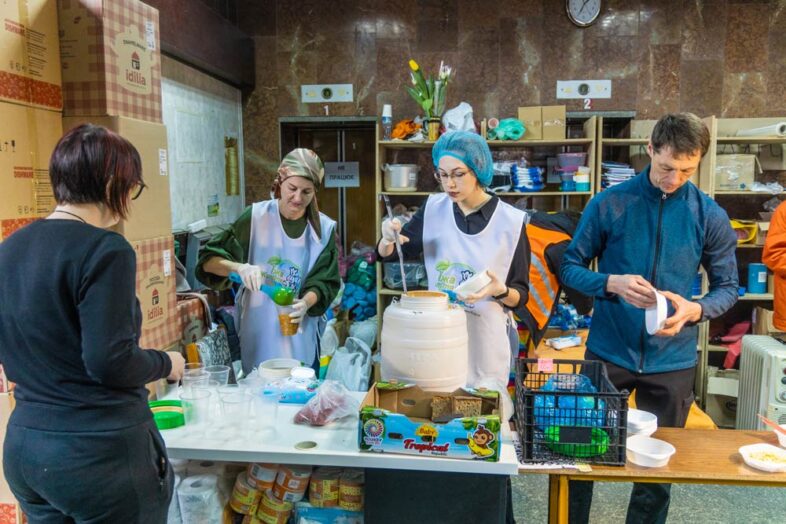
Yulia Dmytrova, head of the “TAPS” Charitable Foundation, which focuses on the mental health of soldiers and their families, as well as those grieving war losses, began her volunteer work back in 2014. Her journey started with helping displaced persons, then shifted to supporting wounded soldiers, and eventually to providing care for the families of the fallen.
“Dnipro has been a bastion for a decade now, and that steadfastness remains. The people here are remarkable and united. On the day of the Russian invasion, everyone sprang into action, ensuring the city’s safety, supporting the military, and aiding displaced individuals. Despite the ongoing war, Dnipro’s development presses on, with new housing and parks springing up. The challenge of integrating public and local government efforts persists, but we remain committed to overcoming it. The resilience and rapid response of Dnipro during these trying times offer a model for study and admiration for years to come.”
A separate story involves people for whom the war until 2022 seemed far away, who happily continued to listen to Russian pop music and watch their series from time to time, occasionally encountering incomprehensible reports about the Anti-Terrorist Operation or Joint Forces Operation [terms used by Ukraine and the international community to refer to the Ukrainian territories in the Donetsk and Luhansk regions temporarily occupied by Russian military forces and/or Russian military proxies].
Natalia Khazan is a film producer, volunteer, and public figure whose contributions have significantly impacted Ukraine. In 2015, she established the country’s first rest area for soldiers at the Dnipro train station, a project supported around the clock by over 120 volunteers.
By 2017, Khazan had also played a key role in creating the First Museum of the ATO in Dnipro, where she produced the world’s first 360-degree panoramic film about the Russian-Ukrainian war. Her documentary “Eastern Front” gained international acclaim as the sole Ukrainian film in the main competition at the Berlinale International Film Festival in 2023.
Reflecting on the impact of the Russian war against Ukraine, Khazan notes, “In 2014, Dnipro sent the highest number of volunteers to defend our country, and with that came the greatest human losses. The full-scale invasion brought the war uncomfortably close to home. It has defined a quarter of my life, and I believe every Ukrainian must contribute in whatever way they can towards victory. For me, that means engaging in volunteering, creating documentary films, and supporting through informational work.”
***
This is the first segment of a larger story. The next part will be available soon. Stay tuned for more.

